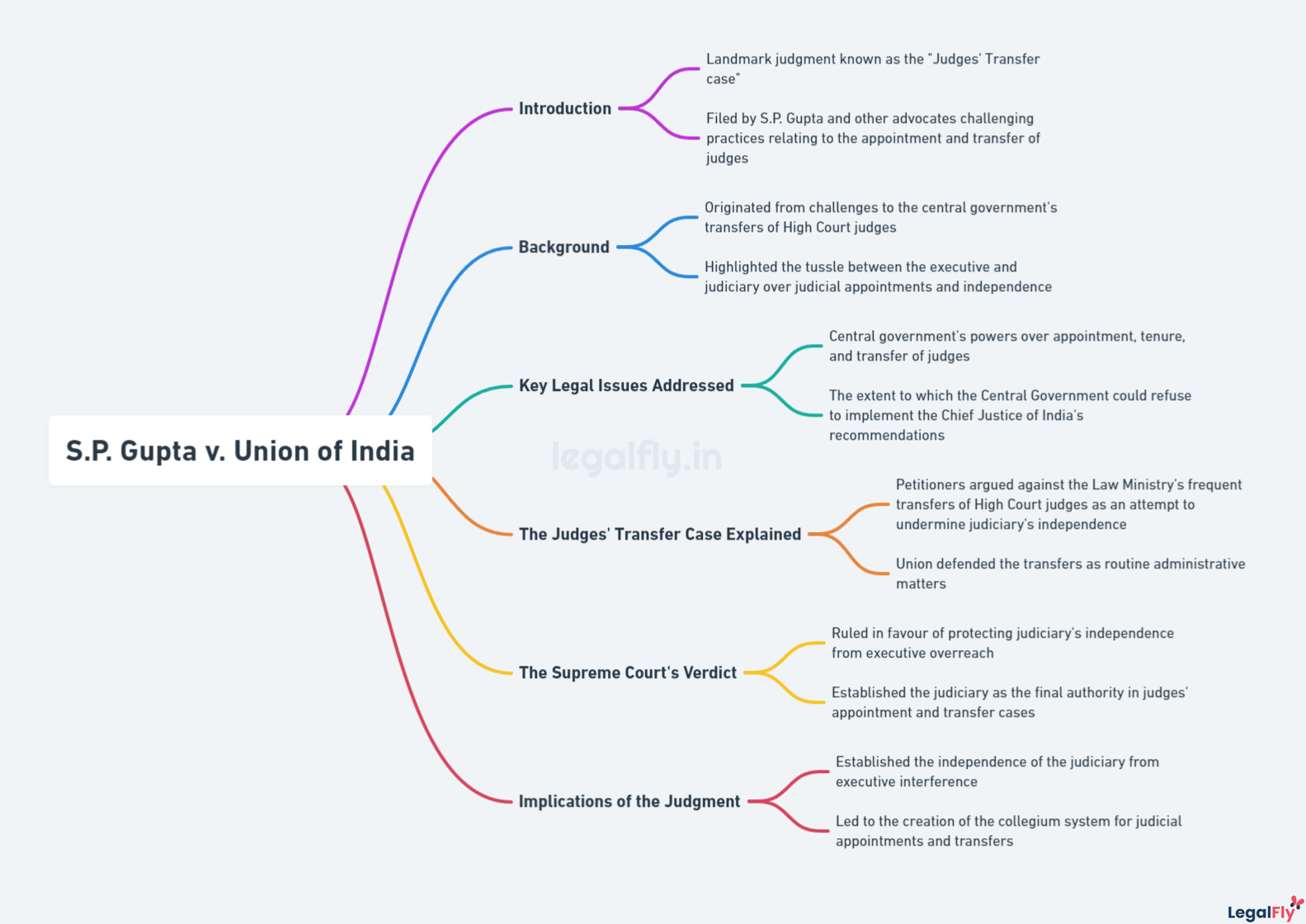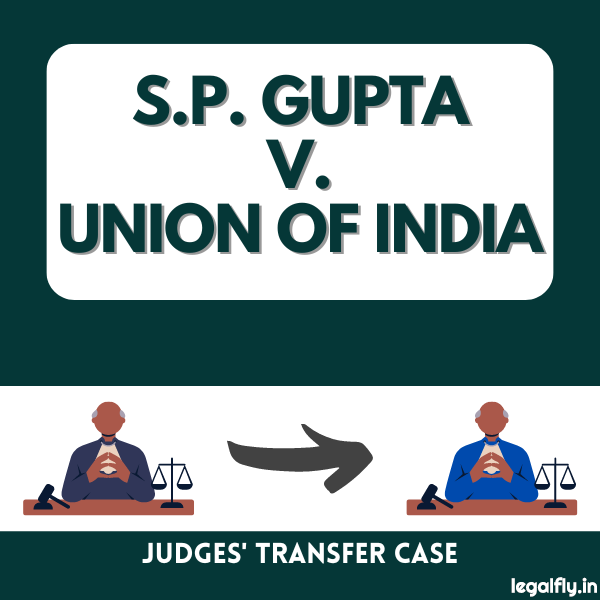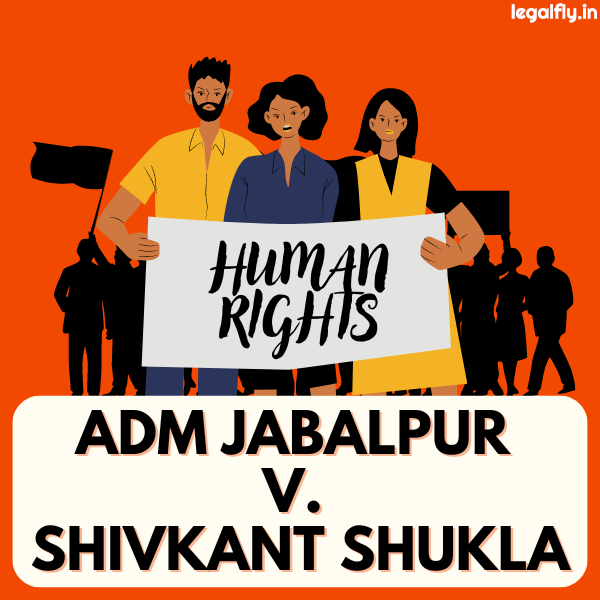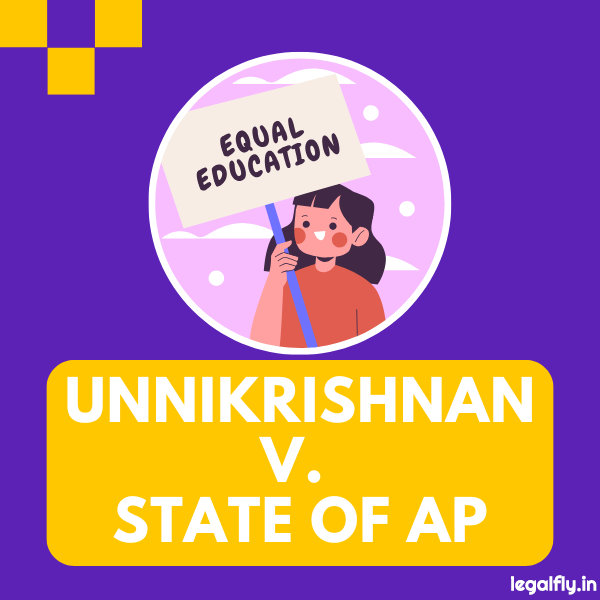Case Name: S.P. Gupta vs Union Of India & Anr Court: Supreme Court of India Year: 1981 Citation: 1982 AIR 149, 1982 SCR (2) 365, 1981 SCC (Suppl.) 87
Table of Contents
Introduction to S.P. Gupta v. Union of India
S.P. Gupta v. Union of India, also known as the “Judges’ Transfer case,” was a landmark judgment by the Supreme Court of India in 1981. The case involved public interest litigation filed by S.P. Gupta and other Supreme Court advocates challenging the constitutional validity of certain practices relating to the appointment and transfer of judges in India.
The petitioners included senior advocates S.P. Gupta, J.B. Dutta, Frank Anthony, Ram Kumar, K.K. Mohan, P. Leelakrishnan, Soli J. Sorabjee, and O.C. Mathur. The respondents were the Union of India, the State of Uttar Pradesh, and others. The case was heard by a seven-judge bench headed by Justice P.N. Bhagwati.
The main issues contested in the case were the central government’s powers over appointment, tenure, and transfer of judges of higher judiciary. The case highlighted the tussle between the executive and the judiciary over judicial appointments and independence. It resulted in a landmark judgment upholding the independence of the judiciary and limiting executive powers over the appointment and transfer of judges.
The case has had far-reaching implications on judicial independence in India and the evolution of the collegium system for appointments. It also expanded the scope of public interest litigation in the country. The judgment is regarded as a milestone in protecting judicial autonomy and insulating courts from political pressures.

Background of the Case
The S.P. Gupta case, popularly known as the “Judges’ Transfer case”, was a landmark case in Indian legal history that brought to the fore the tussle between the executive and the judiciary over appointments and transfers of judges.
The case originated when senior advocate S.P. Gupta filed a writ petition in the Supreme Court in 1981 challenging the central government’s arbitrary transfers of High Court judges. This came against the backdrop of the supersession of three senior judges for the post of Chief Justice of India during the Emergency in the 1970s. The executive action was seen as an attempt to undermine the judiciary’s independence.
Earlier, in Union of India v Sankalchand Himatlal Sheth (1977), the Supreme Court ruled that the transfer of High Court judges was not justiciable as it was essentially an administrative matter. However, S.P. Gupta’s petition urged the Court to reconsider this view in light of constitutional provisions safeguarding judicial independence.
The case thus brought into focus the delicate balance between judicial independence and accountability to the executive. It paved the way for greater scrutiny of executive discretion in judicial appointments and transfers.
Key Legal Issues Addressed
The key legal issues addressed in S.P. Gupta v. Union of India were judicial appointments, transfers, and the independence of the judiciary.
The main questions examined by the Supreme Court were:
- Whether the Central Government had absolute discretion over the appointment and transfer of judges to the higher judiciary.
- To what extent the Central Government could refuse to implement the recommendations of the Chief Justice of India regarding appointments and transfers.
- Whether the judiciary could claim primacy over the executive in matters of judicial appointments and transfers to safeguard its independence.
- What constitutional provisions ensure the independence of the judiciary, and how should conflicts between the executive and judiciary be resolved.
The Supreme Court had to balance between preserving judicial independence and upholding constitutional provisions for cooperation between the executive and the judiciary. In this case, the verdict would set an important precedent on the separation of powers between the different branches of government.
The Judges’ Transfer Case Explained
The petitioners in S.P. Gupta v. Union of India argued that the Law Ministry’s frequent transfers of High Court judges were an attempt to punish independent judges and influence High Court decisions. They claimed that this undermined the independence of the judiciary guaranteed under Article 50 of the Constitution.
The main arguments put forth by the petitioners were:
- The transfers were not made in the public interest but rather to punish independent judges who made decisions that the government disfavored.
- The Union’s use of transfers to influence and pressure judges went against the constitutional principle of an independent judiciary.
- The transfers impacted the morale and independence of judges, making them conform to the executive’s will.
- The Union’s claim of privilege against disclosure of reasons for transfers was unjustified.
The Union of India defended the transfers by arguing executive privilege and stating the transfers were routine administrative matters made in the public interest. Their main arguments were:
- The executive had the exclusive power to transfer judges in the public interest as part of the administration of justice.
- The reasons for transfers could not be disclosed due to executive privilege and secrecy requirements.
- There was no real evidence the transfers were made to punish or influence judges.
- The judiciary could not question the executive’s administrative decisions on transfers.
The key dispute was over the misuse of transfer powers versus executive privilege, which impacted judicial independence.
The Supreme Court’s Verdict
The Supreme Court delivered its historic judgment on the S.P. Gupta case on December 30, 1981. The bench, headed by Justice P.N. Bhagwati, ruled in favour of protecting the judiciary’s independence from executive overreach.
Main Findings of the Court
The Court held that the Central Government does not have an “untrammelled power” to transfer high court judges without consent. It cannot use transfers as a “punishment posting” to discipline independent judges. The judgment asserted that the consent of the judge must be secured before transferring them to another high court.
The Court ruled that in matters of appointments and transfers of judges, the Chief Justice of India’s opinion has precedence and is binding on the executive. This established the judiciary as the final authority in judges’ appointment and transfer cases.
The Doctrine of Judicial Independence
The landmark verdict unequivocally declared judicial independence to be part of the basic structure of the Constitution. This was based on the doctrine of separation of powers between the executive, legislature, and judiciary.
The judgment stated that the judiciary must be independent of executive influence or control. Judicial independence is required to uphold the rule of law and ensure fair justice.
Thus, S.P. Gupta v. Union of India affirmed judicial independence as a core constitutional principle. This guiding doctrine formed the basis of the subsequent evolution of judicial appointments in India.
Implications of the Judgment
The S.P. Gupta case had far-reaching implications on the appointment and transfer of judges in India. It established the independence of the judiciary from executive interference in judicial appointments and transfers.
Before this case, the executive had a dominant say in judicial appointments and transfers under the old system. This allowed scope for political interference and favouritism in appointing judges. However, this case led to the creation of the collegium system, where senior judges now recommend appointments and transfers of judges.
The judgment clarified that consultation with the Chief Justice of India on judicial appointments and transfers is mandatory. This evolved into the collegium system through subsequent judges’ cases. Under the collegium system, the CJI and a forum of senior judges now have the authority to recommend judicial appointments and transfers.
By establishing the importance of the judiciary in appointments, S.P. Gupta was a landmark moment upholding judicial independence. The principles laid down in this case marked a defining shift from executive dominance to judicial primacy in judicial appointments and transfers. This significantly reduced political interference and strengthened judicial independence.
Analyzing the Controversies and Criticisms
The S.P. Gupta judgment generated significant controversies and criticism regarding the balance of power between the executive and the judiciary. Some key areas of debate were:
Debates Over Judicial Accountability
Some saw the judgment as compromising judicial accountability by insulating the judiciary from executive oversight on appointments and transfers. Critics argued that removing executive control over judges could lead to nepotism and a lack of transparency within the judiciary itself.
However, supporters of the judgment contended that accountability should not come at the cost of judicial independence, which is crucial to upholding the rule of law. The judiciary needed to be shielded from political pressures to render impartial verdicts.
The Balance Between Executive and Judiciary
The case brought the tussle between the executive and judicial powers to the fore. The government argued that executive discretion was necessary in judges’ appointments for efficient administration. However, the Court ruled that the primacy of the judiciary was vital to preserve democracy.
Some experts criticized the verdict as vesting uncontrolled powers in the hands of the judiciary and disturbing constitutional checks and balances. However, others stated reasonable limitations on executive authority were required to maintain judicial independence. The case highlighted the complex balance between executive prerogative and judicial autonomy.
The Role of Public Interest Litigation (PIL) Post-S.P. Gupta
The S.P. Gupta case paved the way for the expansion of public interest litigation (PIL) in India. PIL allows public-spirited citizens and organizations to file cases on behalf of those who cannot access the judicial system.
Prior to S.P. Gupta, standing requirements were strict, and only those directly aggrieved could approach the courts. However, Justice P.N. Bhagwati relaxed these rules for PIL, allowing “public-spirited citizens” to file cases against government actions violating the fundamental rights of disadvantaged groups. This made justice more accessible for the poor and marginalized.
S.P. Gupta also demonstrated how PIL could be used to uphold constitutional values and the rule of law. By challenging arbitrary transfers of judges, the petitioners asserted judicial independence from executive interference. This set an important precedent – PIL could now question the constitutional validity of any state action or legislation.
Overall, S.P. Gupta paved the way for PIL to become an important instrument of social change in India. The judicial process enabled citizens and organizations to participate directly in strengthening democracy, rights, and governance. By expanding access to justice, S.P. Gupta catalyzed legal activism in India.
Comparing S.P. Gupta with Other Significant Cases Related to Judicial Independence
The S.P. Gupta case laid the foundation for how judges would be appointed and transferred in India. However, subsequent cases further shaped the process:
From S.P. Gupta to the Second and Third Judges’ Cases
In S.P. Gupta, the Supreme Court gave priority to the executive in judicial appointments and transfers. However, in the Second Judges Case in 1993, the Supreme Court established the “Collegium System”, holding that the Chief Justice would have the final say in judicial appointments and transfers. This tilted the balance of power towards the judiciary.
The Third Judges Case 1998 reaffirmed the Collegium System, mandating that the Chief Justice consult a collegium of the four senior-most judges for appointments and transfers. This expanded the judiciary’s role in selecting judges.
The Changing Dynamics of Judicial Appointments
The S.P. Gupta case gave priority to the executive in judicial appointments. However, the subsequent judges cases established the Collegium System, giving the judiciary, especially the Chief Justice and senior judges, the final authority. This changed the power dynamics considerably.
Kesavananda Bharati Case
The Kesavananda Bharati case decided in 1973, is considered a watershed moment in Indian constitutional law. It dealt with the question of whether the Parliament has unlimited power to amend the Constitution or if there are certain basic features that cannot be altered.
In a landmark decision, the Supreme Court held that Parliament’s power to amend the Constitution is not absolute and that certain basic features form the core of the Constitution and cannot be tampered with.
The Kesavananda Bharati case is often compared to the S.P. Gupta case because both cases involved the interpretation of the Constitution and the role of the judiciary in upholding its integrity. While the S.P. Gupta case focused on the issue of judicial independence and the power of the executive to transfer judges, the Kesavananda Bharati case centered around the concept of basic structure and the limitations on the Parliament’s amending power.
Conclusion
The S.P. Gupta case was a landmark judgment in Indian legal history that established the judiciary’s independence from executive interference. The Supreme Court asserted that transfers of High Court judges could not be based solely on executive discretion but required consultation with the Chief Justice of India.
This case marked a defining moment in expanding public interest litigation (PIL) in India. By allowing a petition filed by a group of lawyers and citizens, the Court enabled citizens to approach it directly to uphold constitutional rights. The judgment also led to the evolution of the collegium system for appointing judges.
The legacy of S.P. Gupta is its significant contribution to enhancing judicial independence and activism in India. Although it was criticized for overreaching and lack of accountability, it managed to shift the balance of power between the executive and judiciary. The case will always be remembered for promoting citizens’ rights to petition the Supreme Court directly on matters of public interest. Its interpretation of the basic structure doctrine has also strengthened constitutional safeguards for the judiciary’s authority.




